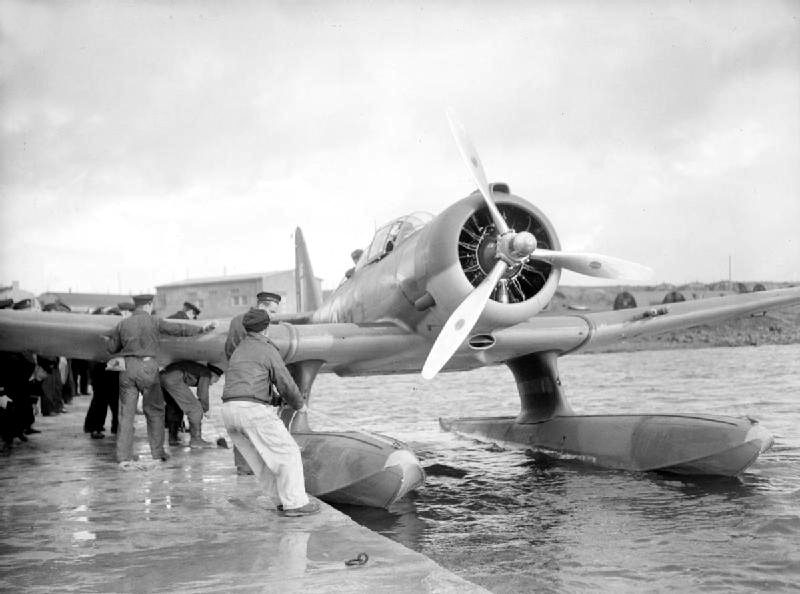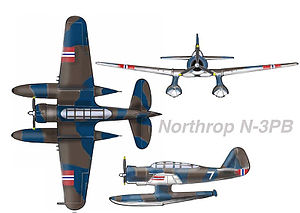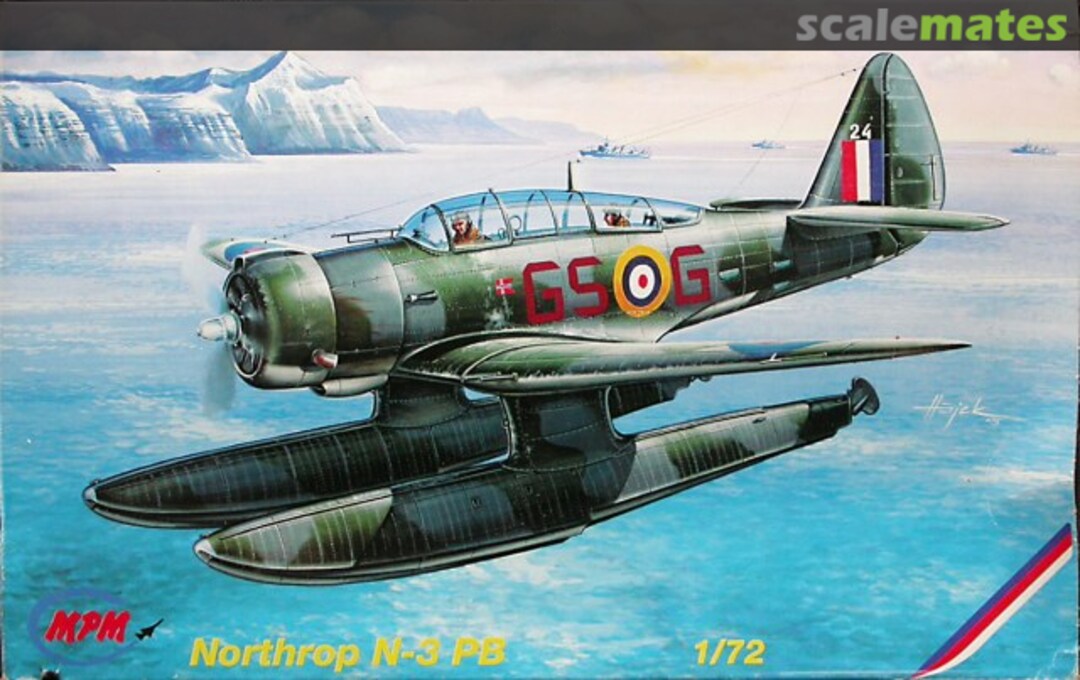The Northrop N-3PB Nomad was a single-engined American floatplane of the 1940s. Northrop developed the N-3PB as an export model based on the earlier Northrop A-17 design. A total of 24 were purchased by Norway, but were not delivered until after the Fall of Norway during the Second World War.
Exiled Norwegian forces used them from 1941, operating from Iceland, for convoy escort, anti-submarine patrols, and training purposes from "Little Norway" in Canada. Within two years of delivery, the design was effectively obsolete in its combat role, and the remaining N-3PBs were replaced by larger aircraft in 1943.

No. 330(N) Squadron was declared operational on 25 April 1941;[15] the N-3PBs were erected in a seaplane hangar at Reykjavik, with the first aircraft flying by 2 June 1941. The squadron flew antisubmarine and convoy escort patrols from 23 June 1941, with flights based at Reykjavík, Akureyri and Budareyi. While the squadron's N-3PBs carried out eight attacks on German U-boats, including one on U-570 after it had surrendered to the British, no U-boats were sunk.
Full story - Northrop N-3PB
On a number of occasions in 1942, the N-3PBs clashed with Focke-Wulf Fw 200 long range reconnaissance bombers and Blohm & Voss BV 138 flying boats, being credited with at least one damaged. On 10 October 1942, a "Northrop" from Budareyi was involved in a friendly fire incident, attacking a British Lockheed Hudson.
The incident ended without any of the aircraft involved being hit.
In an effort to publicize the N-3PB operations, the British Air Ministry circulated a report that two Norwegian-flown aircraft had been involved in the attack on the German battleship Bismarck on 21–22 May 1941, but it was merely an example of wartime propaganda. Despite many aviation historians disputing the claim, it still appears in current accounts of the sinking of the Bismarck. No. 330(N) was formed on 25 April 1941 and received its first of 18 N-3PBs on 19 May, two days before the attack on the Bismark but didn't fly until 2 June 1941 and their first official operational flight wasn't until 23 June 1941.
No. 330(N) Squadron began supplementing the N-3PBs with Consolidated Catalina flying boats in 1942, and both the Catalina and the N-3PB began to be displaced in February 1943 by the arrival of the more capable Short Sunderland. Flying boats allowed for longer patrols to be carried out, and had superior seakeeping qualities to the N-3PB. The surviving N-3PBs continued to operate alongside the Catalinas, flying fighter patrol, escort and antisubmarine operations off Iceland's east coast until early 1943.

(Pinterest)
Throughout the transition to other types, the squadron's C-Flight maintained an "all-Northrop" unit, predominately involved in secondary roles including army cooperation, transport, air-sea rescue, ice reconnaissance and ambulance roles.
In early 1943, No. 330(N)'s crews relocated to Oban, Scotland, aboard the troop ship Leinster. Two of the remaining N-3PBs flew to Oban. The eight aircraft left behind on Iceland were scrapped in Reykjavik between December 1942 – April 1943.
Throughout its combat service from 23 June 1941 – 30 March 1943, No. 330(N)'s N-3PBs carried out 1,1011 operational sorties, totalling 3,512 hours flying time. Although the eight attacks they carried out on U-boats proved inconclusive, N-3PB escort patrols and antisubmarine sweeps were an important part of the Allied effort in keeping the North Atlantic sea lanes open. After the end of the type's combat service on Iceland, the Norwegian naval authorities considered basing two N-3PBs on Svalbard, an Arctic archipelago previously known as Spitzbergen.
A German naval raid on 8 September 1943 resulted in the deployment being cancelled.

General characteristics
Crew: Three (pilot, navigator/bombardier and wireless operator/rear gunner)
Length: 10.98 m
Wingspan: 14.91 m
Height: 3.66 m
Wing area: 35.0 m²
Empty weight: 2,814 kg
Loaded weight: 3,864 kg
Max. takeoff weight: 4,818 kg
Powerplant: 1 × Wright GR-1820-G205A 9-cylinder air-cooled radial engine, 1,200 hp (825 kW)
Maximum speed: 414 km/h at sea level
Cruise speed: 296 km/h
Range: 1,610 km
Service ceiling: 7,320 m
Climb to: 4,570 m: 14.4 min
Armament: 4 × fixed forward firing .50 in machine guns
2 × .30 in machine guns (dorsal and ventral positions)
Bombs: 1 × 2,000 lb torpedo or equivalent weight of bombs or depth charges


Ei kommentteja:
Lähetä kommentti
Kaikenlaiset kommentit ovat tervetulleita.